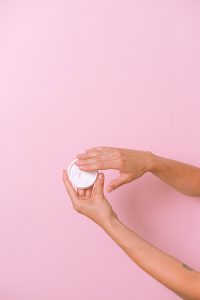A Guide to Better Protection

With the current news cycle, it is unsurprising that many of us are concerned about the chemicals in our waterways and carcinogens in our food supply.
Unfortunately, without diving into the research ourselves, we often don’t know what, where, or how much any of these toxins amount to.
That’s precisely why we provide answers for your most pressing worries regarding toxicity, environmental issues, and the health of this planet!
The Hawaii state legislature voted in favor of a pivotal bill that seeks to prohibit oxybenzone and octinoxate, two chemicals found in the majority of nonmineral sunscreens.
Evidence collected by researchers has demonstrated how these compounds have been damaging the marine environment, causing coral bleaching and even death.
This particular law would largely affect all chemical-based sunscreen products sold across the United States as well as compel manufacturers to alter their formulas or discontinue selling such goods within Hawaii’s borders.
Coral has the potential to recover from bleaching, however, if it happens on a yearly basis, then its chances of bouncing back become increasingly slim.
Studies prove that oxybenzone and octinoxate are both endocrine disruptors that cause genetic damage to coral as well as hamper their reproductive abilities.
For over ten years now, The Environmental Working Group has been warning people about oxybenzone’s dangers; human toxicity research even links this compound with allergic skin reactions.
Research conducted in laboratories demonstrates that oxybenzone is a weak estrogen, as well as exhibiting potent antiandrogenic properties.
A study conducted by the Centers for Disease Control and Prevention (CDC) found that almost every American had detectable levels of oxybenzone in their blood. Those who reported using sunscreen had even higher concentrations, while an evaluation of CDC-collected exposure data among children revealed a correlation between increased oxybenzone measurements and decreased testosterone levels in adolescent boys.
Octinoxate, which may soon face similar restrictions as oxybenzone in Hawaii, is also suspected to have potentially damaging health effects on humans; however, more research needs to be done before any firm conclusions can be drawn.
EWG has spearheaded a movement to urge businesses to omit oxybenzone from their products. Let’s spread the word and join EWG in this initiative with the hashtag #SunscreenMadeSafer!
Sunscreen Ingredients
In the United States, sunscreens provide protection from UVB rays that cause burning but are usually not as effective at blocking UVA rays, which can cause premature aging and increase one’s cancer risk.
Unfortunately, US-sold sunscreen products do not offer as much coverage against UVA radiation compared to those sold in other nations.
After a grueling 10 year hiatus, the US Food and Drug Administration recently approved a new sunscreen filtering ingredient. However, almost 50% of American sunscreens don’t possess enough UVA protection to meet higher European Union standards.
Unfortunately, rigorous approval regulations in the US and insufficient safety-testing data for new ingredients have caused product advancement to reach a standstill.
Consequently, sunscreen producers in the United States are left with minimal options when it comes to components that can effectively protect against hazardous ultraviolet radiation from the sun. This means American consumers don’t have access to more potent filters, which have been employed extensively elsewhere around the world for many years now.
Despite the sunscreen industry being worth more than $1 billion, Congress has been asked to help clear the way for improved sunscreens.
The pressure was further increased after Hawaii passed legislation banning oxybenzone and octinoxate, making pending legislation that would hasten approvals even more essential.
Protection: Chemical vs Mineral Sun
Sun protection formulas vary, featuring chemical and mineral filters to effectively protect skin against the sun’s harmful rays. The majority of US products contain a combination of two to six FDA-approved active ingredients like oxybenzone, avobenzone, octisalate, octocrylene, homosalate, or even octinoxate. By selecting the right sunscreen with these key components, you can maintain healthy and beautiful skin!
Mineral sunblocks are made with zinc oxide and/or titanium dioxide as their active components, both of which absorb ultraviolet radiation.
Compared to their chemical alternatives, these ingredients prove much more dependable in the sun, yielding broad-spectrum protection from both UVA and UVB rays—something not all chemical formulas can guarantee.
Our latest research uncovered a shocking finding: two-thirds of products available on the market today don’t provide adequate protection or contain hazardous ingredients, such as oxybenzone. To assist you in making an informed decision when selecting sunscreen, we have compiled a list of our top-rated products.
- Best All-Over Wear Mineral Sunscreen
- Best Tinted Facial Mineral Sunscreen
- Best Moisturizing Mineral Sunscreen
- Best Refreshin Mineral Sunscreen
- Best Daily Sun Protection Mineral Sunscreen
When choosing a sunscreen, it’s important to select one with an SPF value no higher than 50+. Products that offer a higher SPF may give you a false assurance of sun safety and lack adequate UVA protection.
Additionally, avoid sprays, as they do not create even coverage on the skin and can be hazardous when inhaled.
When it comes to sun protection, don’t forget that a quality sunscreen is only one tool in your arsenal. Make sure you also shield yourself with protective clothing, hats, and sunglasses—they’ll help keep the sun’s rays off both your skin and eyes! Also try to steer clear of direct sunlight between 10am-4pm when UVA/UVB radiation is at its strongest.

